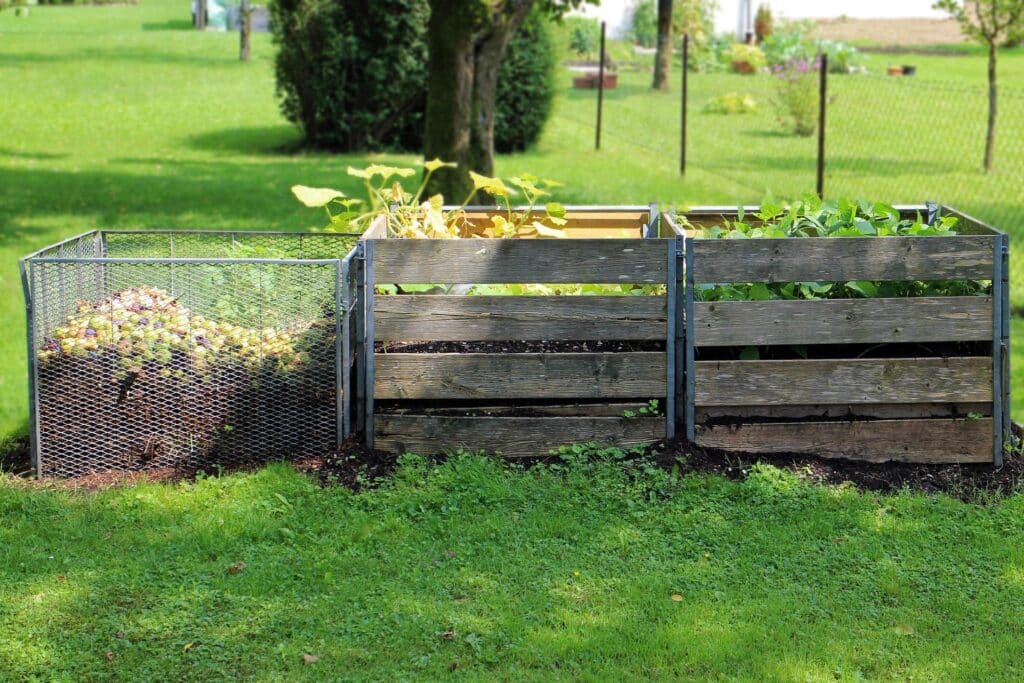You’re swatting at tiny flies buzzing around your kitchen sink or hovering near your houseplants. These small, persistent creatures keep returning no matter how many you eliminate, leaving you frustrated and wondering exactly what you’re dealing with. While these pests might appear nearly identical at first glance, distinguishing between fungus gnats and fruit flies proves essential for effective elimination.
Proper identification represents the crucial first step in successful pest management. These insects originate from completely different sources, demonstrate distinct behavioral patterns, and require targeted control approaches for lasting results. Understanding which species you’re encountering enables you to implement the most effective fly control strategies while avoiding wasted time and effort on inappropriate treatment methods.
Start With Where You See Them
The most reliable method for distinguishing between fungus gnats and fruit flies involves observing where they concentrate their activity. Each species demonstrates strong preferences for specific environments that reflect their unique biological requirements and breeding habits.
Fruit Fly Preferences
Fruit flies gravitate toward areas containing fermented or fermenting organic materials, particularly locations with high sugar content and decomposing fruit matter. You’ll typically encounter them around overripe bananas, peaches, or other produce, near open wine bottles or beer containers, around kitchen garbage receptacles containing food waste, within kitchen sink drains where organic matter accumulates, and on damp dish sponges or cleaning cloths with food residues.
Their attraction to fermented sugars explains their persistent presence near fruit bowls, wine glasses, and any location where sweet, organic materials begin decomposing. They also commonly appear around recycling bins containing beverage containers and compost areas with fruit and vegetable scraps.
Fungus Gnat Preferences
Fungus gnats demonstrate strong affinity for consistently moist soil environments where fungal growth and organic decomposition provide their preferred nutrition sources. Common sighting locations include indoor potted plants with over-watered soil, planters with poor drainage allowing water accumulation, seedling trays in greenhouses or growing areas, herb gardens with excessive moisture retention, and containers with accumulated organic matter in soil surfaces.
You’ll often observe them walking across soil surfaces or hovering just above plant containers, particularly around areas where soil remains perpetually damp and organic matter accumulates.
Learn the Visual Differences
While both species appear as small flying insects, careful observation reveals distinct physical differences that enable reliable identification even without magnification equipment. Understanding these visual distinctions helps confirm species identity when location-based identification proves unclear.
Size and Body Structure
Fruit flies measure approximately 3-4mm in length with notably stocky, robust body builds and rounded head shapes that give them a compact appearance. Fungus gnats appear slightly smaller at 2-3mm but display distinctly slender body profiles with proportionally longer legs that create a more delicate overall appearance.
Wing Positioning and Behavior
Fruit flies hold their wings either flat against their bodies or slightly spread when resting, similar to miniature houseflies. Fungus gnats position their wings in a characteristic tent-like formation over their bodies, resembling tiny mosquitoes in their resting posture.
Coloration Patterns
Fruit flies exhibit tan or light brown body coloration with distinctively bright red or orange eyes that stand out prominently against their bodies. Their wings appear slightly cloudy or translucent with visible venation patterns.
Fungus gnats display uniformly black or dark gray body coloration with completely black eyes that blend with their body color. Their wings appear clear and transparent without the cloudy appearance typical of fruit flies.
Movement Characteristics
Fruit flies demonstrate relatively slow, hovering flight patterns and often appear to bounce or drift in air currents. Fungus gnats exhibit more erratic flight behavior with quicker, more darting movement patterns that make them appear more agile despite their smaller size.
Check for Larvae
Identifying larval stages provides definitive confirmation of species identity while revealing breeding locations that require treatment for complete elimination. Understanding where each species reproduces enables targeted intervention strategies addressing infestation sources rather than just visible adult insects.
Fungus gnat larvae:
- Found in upper layers of moist potting soil.
- Measure 4-5mm with translucent bodies and black heads.
- Feed on organic matter, fungus, and sometimes plant roots.
- Cause leaf yellowing, stunted growth, and plant decline.
Fruit fly larvae:
- Develop in decomposing organic matter around drains and garbage.
- Measure 3mm with cream/white bodies and no defined head.
- Found in sink drains, compost bins, and beneath appliances.
- Indicate ongoing organic decomposition requiring thorough cleaning.
Successful elimination requires addressing breeding locations rather than focusing solely on adult insect control.
Why the Difference Matters
Implementing inappropriate control methods based on misidentification often worsens infestations while wasting time and resources. Each species requires fundamentally different management approaches targeting their specific biological needs and environmental preferences.
Fruit fly control strategies:
- Remove overripe produce immediately.
- Clean kitchen drains with enzymatic cleaners or baking soda solutions.
- Rinse all recyclable containers before storage.
- Secure compost containers with tight-fitting lids.
- Implement regular garbage disposal and cleaning schedules.
Fungus gnat control approaches:
- Allow potting soil to dry completely between watering sessions.
- Repot affected plants using sterile, well-draining potting mixtures.
- Use bottom-watering techniques to keep soil surfaces dry.
- Remove accumulated organic debris from soil surfaces.
Using the wrong treatment method often proves ineffective and may create additional problems that worsen existing infestations.
Mistaken Identity: Other Kitchen Pests
Several other small flying insects commonly cause confusion during identification attempts, leading to inappropriate treatment approaches and continued infestation problems. Understanding these distinctions prevents misapplication of control strategies while ensuring accurate species targeting.
Drain flies display distinctive moth-like wings with fuzzy bodies and breed in plumbing biofilm, indicating maintenance issues rather than plant or food problems. Phorid flies show characteristic humpbacked profiles and prefer severely decomposed materials in hidden locations like wall voids. Springtails lack wings entirely and move through jumping motions, preferring extremely moist basement and bathroom conditions.
Each species requires specific control strategies targeting their unique breeding requirements. Misidentification typically results in treatment failure and continued reproduction in unaddressed breeding sites, making accurate identification essential for successful pest management.
When to Call for Help
When dealing with persistent small flying pest problems despite your best identification efforts, Aptive’s pest control experts can help. Our pest control service will perform a detailed inspection to assess the situation and develop a customized treatment plan based on accurate species identification and the specific breeding sources supporting these tiny invaders. We’ll identify whether you’re dealing with fungus gnats reproducing in overwatered plant soil, fruit flies breeding in kitchen drains and organic waste, or other similar pests like drain flies or phorid flies that require different treatment approaches.
If you’re continuing to see small flying insects around your kitchen or house plants despite implementing targeted control measures, contact Aptive today for a free quote. Our experts will provide definitive identification and evaluate your specific breeding conditions, recommending the most effective solutions to eliminate these persistent flying pests and prevent future infestations through proper source management.
Common Questions About Fungus Flies vs Fruit Flies
Here are some questions that homeowners ask about telling the difference between fungus flies and fruit flies.
Q: What are more destructive: fungus flies or fruit flies?
Fungus gnats are generally more destructive because their larvae feed on plant roots and organic matter in soil, causing direct damage to houseplants including yellowing leaves, stunted growth, and plant death. Fruit flies primarily contaminate food surfaces and create sanitation issues but don’t cause structural or plant damage. However, both can indicate underlying problems—fungus gnats suggest overwatering issues while fruit flies indicate sanitation problems requiring attention.
Q: What are more dangerous: fungus lies or fruit flies?
Both pose minimal direct health risks to humans, but fruit flies present slightly greater concerns due to their association with contaminated food sources and potential bacteria transmission. They can spread pathogens from garbage and drains to food preparation surfaces. Fungus gnats primarily affect plant health rather than human health. Neither species bites or stings, but fruit flies’ food contamination potential makes them more problematic from a health standpoint.
Q: When do you know that you have a fly infestation?
You have an infestation when you consistently see multiple small flies despite elimination efforts, notice them reproducing with larvae present in soil or drains, observe them concentrated around specific breeding areas like overwatered plants or kitchen drains, and find they return quickly after cleaning. Seeing multiple flies daily, especially in specific locations, typically indicates established breeding populations rather than occasional visitors requiring immediate intervention.









